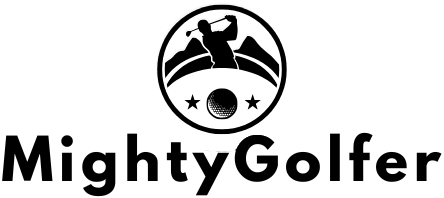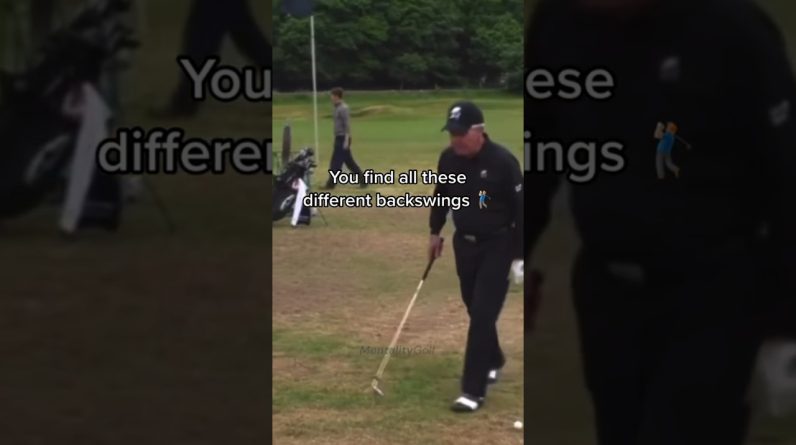This BACKSWING Drill Gets You On Plane Every Single Time #golf #golfadvice #golftips #golfswing
One of the most common issues amateur golfers face is an inconsistent backswing plane which frequently enough leads to erratic ball striking and lack of power. Getting your backswing “on plane” is a critical component to repeating a consistent golf swing and hitting more accurate shots. In this article,we’ll dive into a highly effective backswing drill that guarantees you get on the correct swing plane every single time — plus tips,benefits,and why it fundamentally makes sense.
Why Does Backswing Plane Matter So Much?
The backswing plane is essentially the path your clubhead follows during the initial takeaway and backswing. When your club stays on the correct plane, it positions the clubface in the most efficient spot for the downswing and impact. A proper backswing plane offers several benefits:
- Consistency: Helps you repeat your swing effortlessly.
- Accuracy: Keeps your ball flight straighter and more predictable.
- Power: Maximizes energy transfer by optimizing body and club mechanics.
- Injury Prevention: Reduces strain on your back and shoulders by promoting a smooth swing motion.
The Ultimate Backswing Drill: “The Club Shaft Alignment Drill”
This backswing drill is simple, effective, and suitable for all skill levels. It focuses on aligning the club shaft during takeaway to ensure the club moves on the correct plane instantly.
How to Perform the Club Shaft Alignment Drill
- Setup: Address the ball normally with your standard golf stance and grip.
- Position a Shaft or Alignment Stick: Place an alignment stick vertically into the ground about 6-8 inches outside the ball and just ahead of the target line toward the target.
- Takeaway: Start your backswing slowly. As you begin the takeaway,your club shaft should move parallel to that vertical stick.
- Check the Clubshaft Angle: At the halfway backswing point, pause and make sure your club shaft is roughly parallel to the alignment stick in both vertical and horizontal planes.
- Complete Full Backswing: Continue your swing naturally while maintaining that initial plane angle.
- Practice: Repeat until the correct club path and plane feel natural and automatic.
why This Drill Works
By using the vertical stick as a visual and physical benchmark, this drill trains your body to keep the clubhead on a proper path from the start. It prevents the club from pushing too far outside (a common error leading to an “over the top” swing) or dipping inside too early. This alignment reference builds muscle memory to help you find and stay on-plane on every backswing.
Key Benefits of The Club Shaft Alignment Drill
| Benefit | Description |
|---|---|
| Improved Swing Plane Awareness | Visual feedback helps to develop feel and awareness of the correct swing path. |
| Consistency in Ball Striking | Leads to better contact and reduces mishits caused by off-plane swings. |
| Easier Transition to Downswing | A correct plane backswing naturally sets up a more efficient downswing. |
| Less Tension and Injury Risk | Promotes smoother movement reducing stress on wrists, back, and shoulders. |
Additional Practical Tips to Perfect Your Backswing Plane
- Use a Mirror or Video Recording: Visual feedback is powerful. Check your takeaway and backswing plane with video to reinforce what you feel during the drill.
- Start Slow: Tempo controls your mechanics. Slow down your backswing when practicing the drill to ingrain the correct path.
- Maintain Your Spine Angle: Maintaining posture throughout the backswing helps keep the club on plane naturally.
- Engage your Body Early: Begin your takeaway with your shoulders and arms in sync to guide the club correctly.
- Integrate the Drill into Warmups: Make this drill part of your pre-round routine for a more consistent swing on course.
Firsthand Experience: How This Drill Transformed My Swing
As a mid-handicap golfer, I used to struggle with an inconsistent slice and unpredictable ball flight. After practicing the club Shaft alignment Drill daily for two weeks, my backswing became more controlled and on-plane. The immediate effect was straighter shots and improved distance,with less effort in timing my swing. Most importantly, I felt a new confidence knowing my swing path was repeatable, which lowered my scores significantly.
Common Mistakes to Avoid When Practicing the Backswing Drill
- rushing the Takeaway: Quick backswing moves can cause the club to jump off plane. Take it slow and steady.
- Over-rotating the Wrists Early: Premature wrist hinge can drop the club inside and off-plane.
- Neglecting Setup: Ensure your initial stance is balanced and aligned to maximize drill effectiveness.
- Ignoring Lower Body Movement: Engage your hips and core properly to support the correct swing path.
Why This Drill Is recommended By Golf instructors Worldwide
Certified golf coaches frequently reccommend the Club Shaft Alignment Drill because it simplifies the complex mechanics of the backswing by zoning in on alignment and path awareness. Golfers of all levels benefit from the immediate feedback it provides, making it an essential building block in developing a reliable golf swing that consistently stays on plane.







